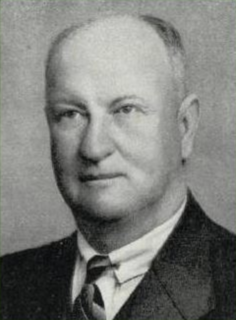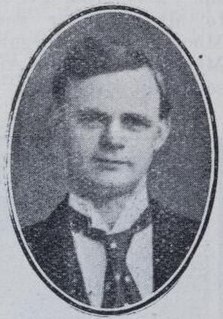
Port Pirie is a city on the east coast of the Spencer Gulf in South Australia, 223 km (139 mi) north of the state capital, Adelaide. The city has an expansive history which dates back to 1845. Port Pirie was the first proclaimed regional city in South Australia and is currently the second most important and second busiest port in the state.

The Port Pirie Regional Council (PPRC) is a local government area in South Australia, focused on the city of Port Pirie. It has a population of about 18,000 people. The council's main administrative facilities and works depot can be found in Port Pirie; it also have a rural office in Crystal Brook. In addition to Port Pirie, the municipality also includes the surrounding towns and localities of Bungama, Collinsfield, Coonamia, Crystal Brook, Koolunga, Lower Broughton, Merriton, Napperby, Nelshaby, Pirie East, Port Davis, Port Pirie South, Port Pirie West, Redhill, Risdon Park, Risdon Park South, Solomontown, Wandearah East, Wandearah West and Warnertown, and part of Clements Gap, and Mundoora.

Edgar Hughes Degenaart Russell was an Australian politician.
William Morrow was an Australian politician. He was a member of the South Australian Legislative Council from 1915 to 1934, representing three successive conservative parties, the Liberal Union, Liberal Federation and Liberal and Country League.
Thomas Goode snr. JP. was a South Australian merchant closely associated with the Murray River town of Goolwa.
Matthew Goode was a softgoods retailer in the early days of South Australia, an important figure in the town of Willunga.
Matthew Goode and Co. was a softgoods wholesaler of Adelaide, South Australia with branches in Perth, Western Australia and Broken Hill, New South Wales
Charles Rufus Goode was a pastoralist and politician in the early days of South Australia.
H. A. & W. Goode was one of the largest regional department stores in the early days of South Australia, with stores in Yankalilla, Aldinga, Willunga, then finally and most notably in Port Pirie. Its principals were three brothers, Henry Abel Goode, William Goode and Benjamin Powell Goode, all born at Kyre Magna, in Worcestershire, sons of farmer William Goode.

Clarence Goode was a farmer and politician in South Australia. Descendants pronounce the family name to rhyme with "wood".
The Recorder is a newspaper published in Port Pirie, South Australia since 1885. Formed by an amalgamation in 1898, it was also previously known as Port Pirie Recorder and North Western Mail between 1898 and 1918, and as The Recorder from 1919. It was later sold to Rural Press, previously owned by Fairfax Media, but now an Australian media company trading as Australian Community Media.
Richard Alexander Geddes was a politician in the State of South Australia.

John Christopher Fitzgerald was an Australian politician. A five-time mayor of the Town of Port Pirie, he was a Labor Party member of the South Australian House of Assembly from 1918 to 1936, representing the multi-member seat of Port Pirie.

Leonard Anver Hopkins JP was a bootmaker and politician in the State of South Australia.

The District Council of Port Germein was a local government area in South Australia, centred on the town of Port Germein. It was gazetted on 5 January 1888 under the provisions of the District Councils Act 1887 and encompassed the hundreds of Baroota, Wongyarra, Booleroo, Telowie, Darling and Appila. It replaced an abortive earlier municipality, the Corporate Town of Port Germein, which had been established on 15 September 1887 when residents, concerned about increased taxation and their interests being lost in a broader shire under the forthcoming reforms, decided to incorporate the town. The local residents reportedly regretted the decision, and when the Act passed late in the year creating the new District Council, state parliament agreed to amalgamate the Corporate Town into the new municipality.

Pilgrim Uniting Church is a church in the heart of the City on Flinders Street, Adelaide, South Australia. It is a church of the Uniting Church in Australia.
The Corporate Town of Jamestown was a local government area in South Australia, centred on the town of Jamestown. It was proclaimed on 25 July 1878, severing the seven-year old settlement of Jamestown from the surrounding District Council of Belalie. The first mayor was John Cockburn, later Premier of South Australia, with George Hingston Lake as town clerk. Under the new council, it instituted a tree-planting program from 1879, reportedly the first town in rural South Australia to do so.

The Corporate Town of Peterborough was a local government area in South Australia centred on the town of Peterborough. It came into existence on 7 October 1886 when it separated from the surrounding District Council of Yongala. It was initially known as Petersburg; it was renamed Peterborough on 10 January 1918, one of many South Australian places to be renamed as a consequence of World War I. It gained additional sections from the Yongala council on 30 August 1888 and 25 November 1897, but lost some territory in 1935 when Yongala amalgamated with the adjacent District Council of Coglin to create the District Council of Peterborough. The two municipalities would coexist alongside each other, the town surrounded by the district council, for more than sixty years.
The District Council of Crystal Brook was a local government area in South Australia from 1882 until 1988, seated at Crystal Brook.

The District Council of Pirie was a local government area in South Australia from 1892 to 1996. It surrounded, but did not include, the city of Port Pirie, which had its own municipal government as the City of Port Pirie.









